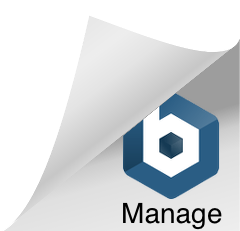What is HealthCare.gov and how does it work?
If you’ve had to shop for your own health insurance, you’ve probably come across HealthCare.gov. But what exactly is this website and how does it work? Use this primer to help you get situated before you start your health insurance enrollment process.
What is HealthCare.gov?
HealthCare.gov is the health insurance exchange website run by the United States government. It is part of the health insurance Marketplace created to help implement the Affordable Care Act (ACA).
Why is there a Marketplace and how does it work under the ACA?
The Affordable Care Act requires almost everyone in the United States to have health insurance that covers essential health benefits. This requirement is called the individual mandate. Plus, the ACA made it illegal for insurers to deny people coverage due to pre-existing conditions and gender.
The Marketplace is where individuals can enroll in health insurance plans that meet those ACA requirements, and all plans on it are considered qualifying health coverage. In addition, when you enroll through the Marketplace, you may qualify for subsidies that can significantly lower your health insurance costs.
HealthCare.gov is the federally-run exchange of the Marketplace. There are 11 states that have opted to create their own exchanges for individual and family health plans: California, Colorado, Connecticut, Idaho, Maryland, Massachusetts, Minnesota, New York, Rhode Island, Vermont, and Washington. The District of Columbia also has its own exchange.
Besides government-initiated websites, there are also privately-run Marketplace options such as HealthSherpa. With HealthSherpa, you get access to all the same plans, prices, and subsidies as HealthCare.gov. Plus, you have a consumer advocate team who can help you enroll and manage your plan.
How does HealthCare.gov work?
Each year there is an Open Enrollment Period when anyone can enroll in a new health insurance plan. During this time, you can go to HealthCare.gov, your state’s healthcare exchange, or a private one like HealthSherpa, and compare and shop for plans. Regardless of which health insurance exchange website you use, you’ll also be able to see if you qualify for monetary assistance with your premiums.
Outside of Open Enrollment, HealthCare.gov operates for informational purposes, to manage existing plans, and for those who have a qualifying life event and thus able to enroll during a Special Enrollment Period (SEP). Read more about what happens during an SEP.
During the rest of the year, you can log into your HealthCare.gov, state exchange, or HealthSherpa account to check the status of your enrollment and pay your monthly premium. Keep in mind though that payments go straight to your insurer, not the healthcare exchange on which you enrolled. You can also use the websites to cancel your health insurance plan for a variety of reasons.
What are the metal tiers and what do they mean?
Marketplace health insurance plans are categorized as Bronze, Silver, Gold, or Platinum. Generally, Bronze plans have the lowest monthly premiums but also the highest out-of-pocket costs. This trend continues up the line to Platinum plans, which typically have the highest monthly premiums and the lowest out-of-pocket costs.
All four plans are eligible for premium tax credits, which can help you pay for your health insurance if you meet the income-based qualifications. Silver plans are also eligible for cost-sharing reductions, a subsidy that lowers the amount you have to pay for deductibles, copayments, and coinsurance. Cost-sharing reductions are also often called cost-sharing subsidies or extra savings in Marketplace health insurance plans.
There is also another type of plan available: Catastrophic. These have even lower monthly premiums than Bronze plans, but they also have very high out-of-pocket costs. These plans cover essential health benefits and are only available to people under 30, unless you’ve obtained a hardship exemption. Catastrophic plans are not eligible for the premium tax credit, however, so depending on your income, a Bronze plan may end up being more affordable after applying a tax credit.
Be sure to compare and shop for your health insurance plan, especially if you qualify for one of the subsidies. A HealthSherpa study during 2018 Open Enrollment found that 18% of enrollees are paying nothing for coverage, with 26% paying less than $10 a month.
Can I get someone to help me?
You can call HealthCare.gov with questions at 1-800-318-2596 or call the HealthSherpa consumer advocate team at 1-855-772-2663. There are also Marketplace phone numbers for each state exchange’s website. HealthSherpa also has an online chat service.













Leave a Comment